Beyond Houseplants: Revolutionary Indoor Courtyard Ideas for Your Home
I don’t know about you but have you ever walked into someone’s home and felt that sudden intake of breath? That moment when you discover an unexpected pocket of nature tucked away inside, creating a magical escape from the ordinary? That’s the power of an indoor courtyard garden – and I’m here to tell you that you can create this magic in your own home, no matter how much space you have.
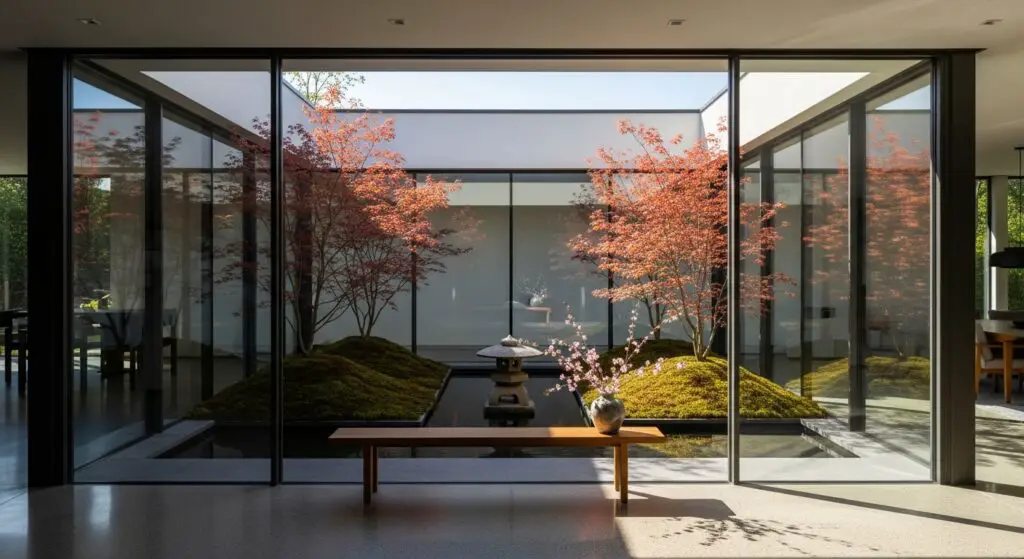
The Allure of Indoor Courtyard Gardens
There’s something almost primal about our connection to nature, isn’t there? Yet in our modern lives, we spend most of our time sealed away from it. Indoor courtyard gardens offer a solution that’s both beautiful and deeply satisfying. They’re not just about adding plants to your home – they’re about creating an experience, a sanctuary that feeds your soul.
Creating Your Personal Sanctuary
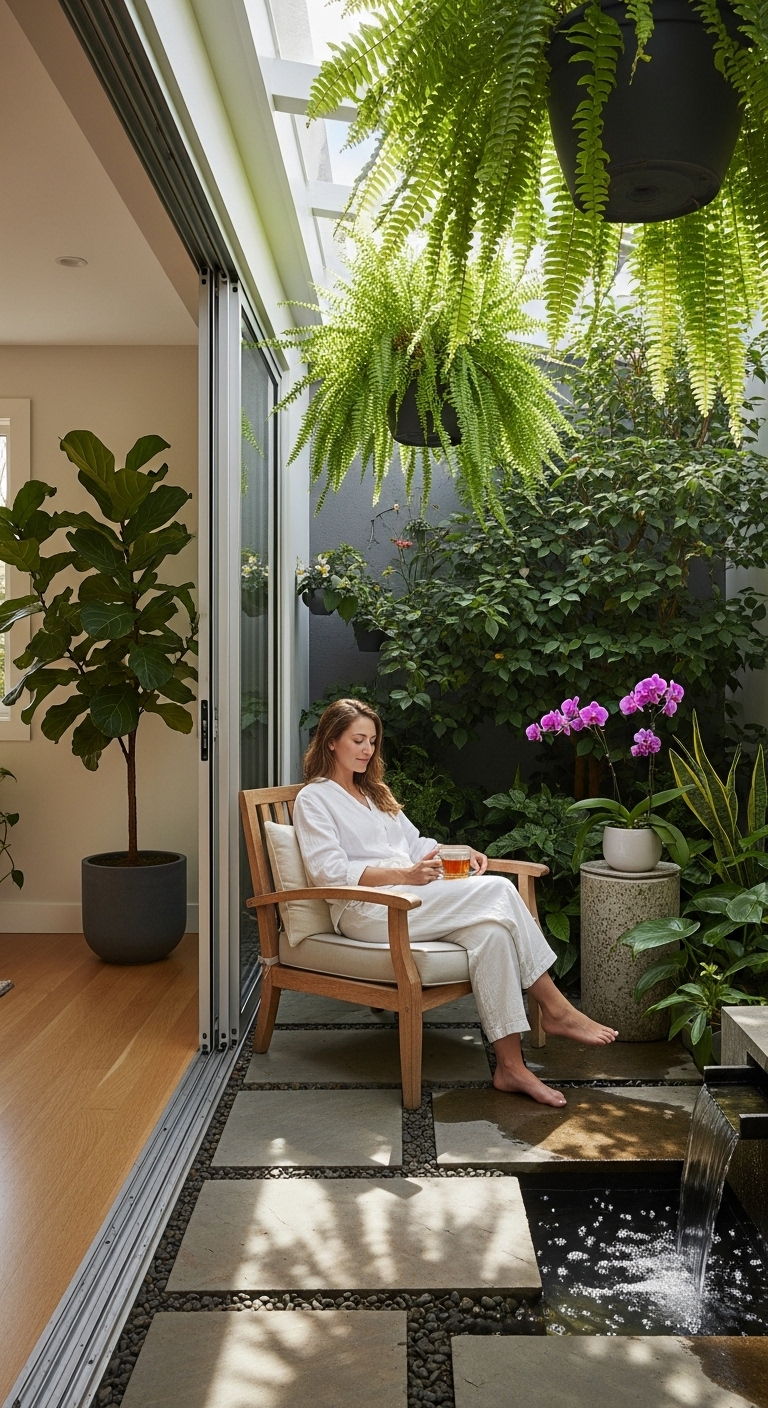
Think about it: when was the last time you truly felt at peace in your own space? We spend so much time curating our homes, but often overlook the one element that could transform them completely. An indoor courtyard garden becomes more than just a design feature – it’s your personal retreat, a place where the boundaries between inside and outside blur in the most delightful way.
I’ve seen clients completely transform once they incorporate an indoor courtyard into their homes. There’s this shift in their energy, this newfound connection to their living space that goes beyond aesthetics. It’s like they’ve discovered a secret room that was always there, waiting to be unlocked.
The Benefits of Bringing Nature Inside
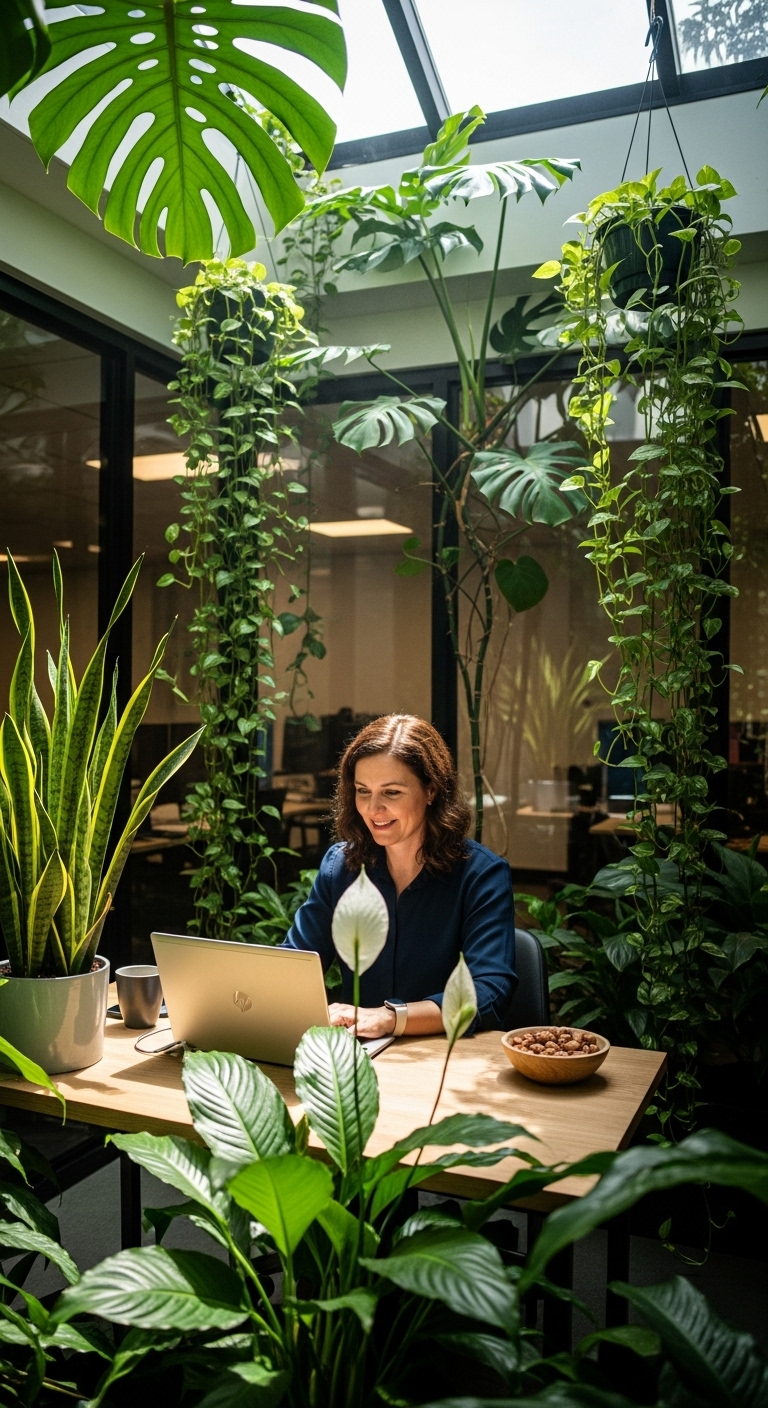
And here’s the thing – the benefits go way beyond just having something pretty to look at. Studies have shown that exposure to indoor plants can reduce stress, improve air quality, and even boost productivity. But with an indoor courtyard garden, you’re multiplying those benefits tenfold.
You’re creating an ecosystem, a microclimate that affects not just how your home looks, but how it feels. The humidity from the plants, the way light filters through leaves, the subtle scents of soil and foliage – these elements work together to create an environment that genuinely supports wellbeing.
Indoor Courtyard Garden Ideas for Every Space
One of the biggest misconceptions I encounter is that you need a huge home or a massive budget to create an indoor courtyard garden. Nothing could be further from the truth. Some of the most stunning indoor courtyards I’ve designed have been in the smallest spaces, where creativity had to work overtime.
Small Indoor Courtyard Garden Ideas
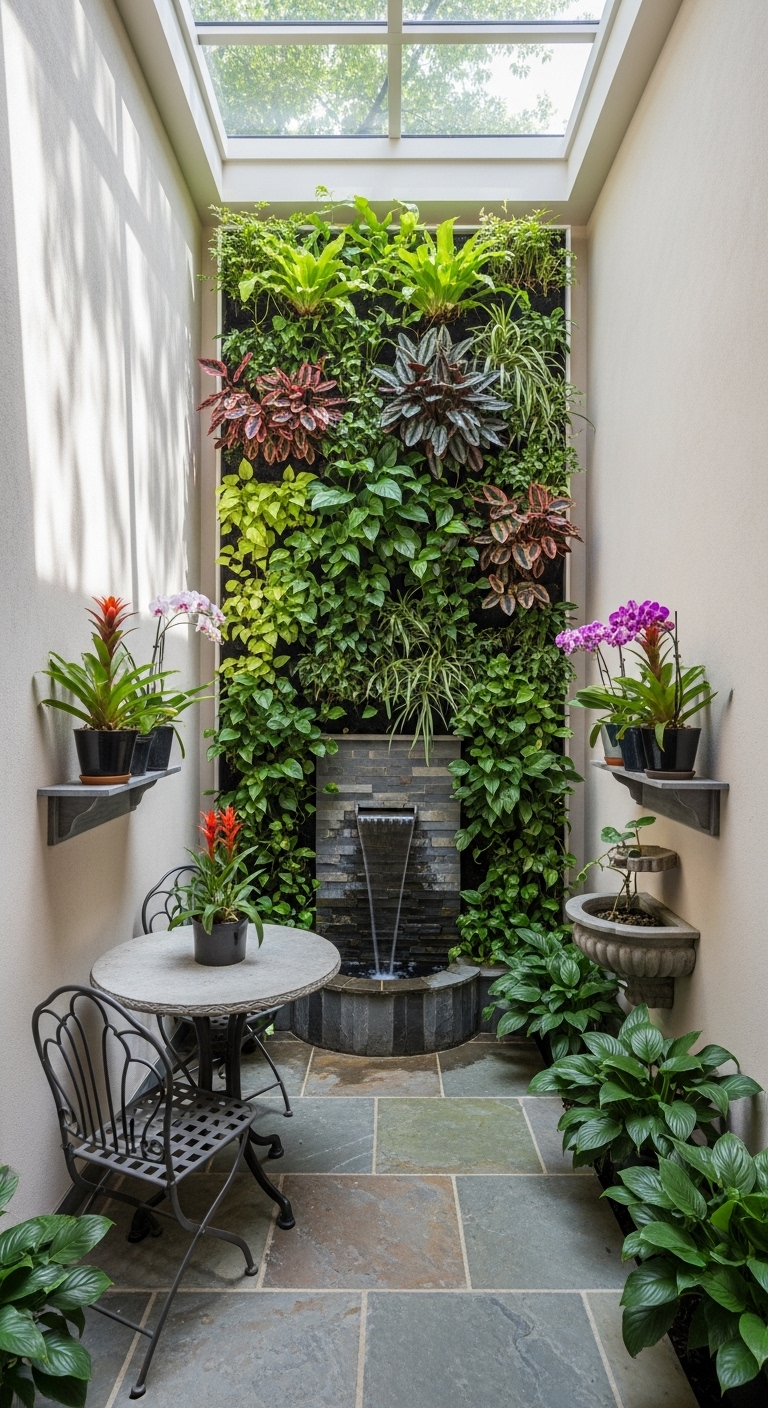
If you’re working with limited space, think vertical. A narrow corridor, an unused corner, even the space beneath a staircase can become a magical indoor courtyard. I once transformed a tiny 4×6 foot alcove in a Manhattan apartment into a lush retreat that made the entire home feel twice as large.
The trick is to be intentional about every element. Choose plants with varying heights and textures to create depth. Use mirrors strategically to amplify light and create the illusion of more space. And don’t forget about seating – even a single cushion or small bench can turn a viewing garden into a usable sanctuary.
Indoor Courtyard Ideas Modern Garden
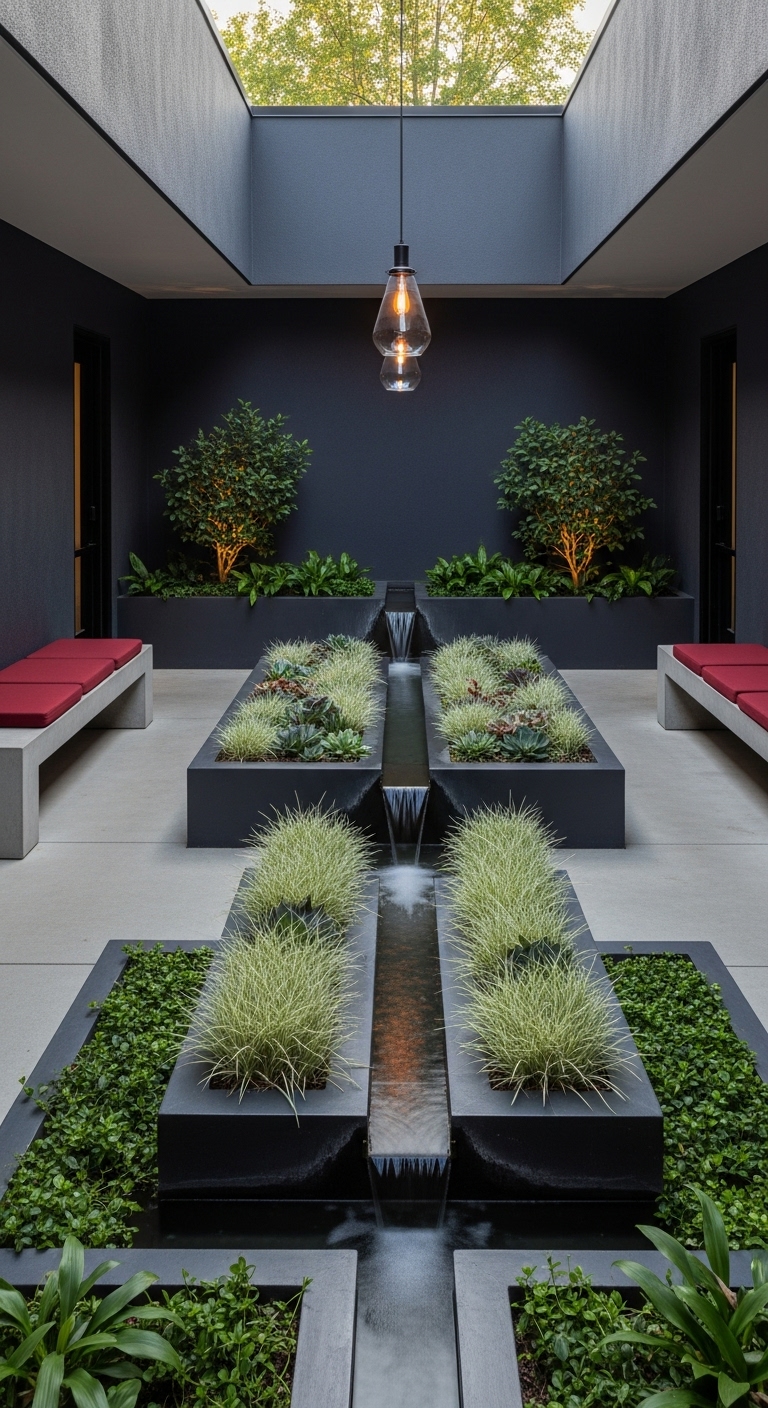
For those who lean toward contemporary aesthetics, indoor courtyards offer incredible opportunities to play with contrast. Think smooth concrete against soft ferns, geometric planters with organic shapes, minimalist design with wild natural elements.
One of my favorite approaches is the “controlled wilderness” concept – using clean lines and architectural elements to frame a more naturalistic planting scheme. This creates tension and interest, making the space feel both sophisticated and alive.
Indoor Courtyard Garden Interior Design
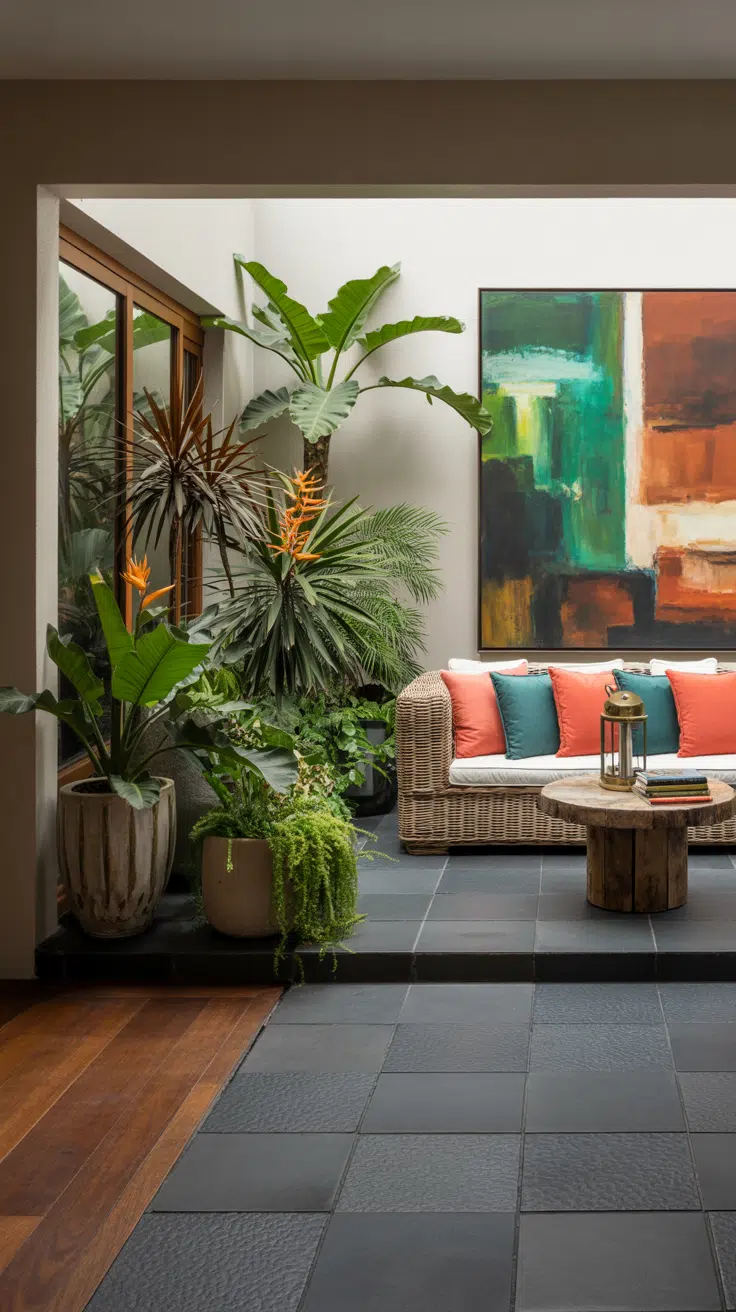
Here’s where things get really interesting. Your indoor courtyard shouldn’t feel like it was just dropped into your home – it should feel like it grew there. This means considering how the courtyard connects to your interior design.
Color is key. Look at the palette in your adjoining rooms and pull out accent colors for your courtyard planters or furnishings. Materials should also flow – if you have a lot of wood in your home, consider wooden elements in your courtyard. If your style is industrial, maybe some metal planters or edging would work well.
Design Styles That Transform Your Space
When it comes to indoor courtyard gardens, there are several design approaches that have proven particularly effective. Each creates a different mood and serves different needs, so it’s worth exploring what resonates with you.
Indoor Courtyard Zen Garden
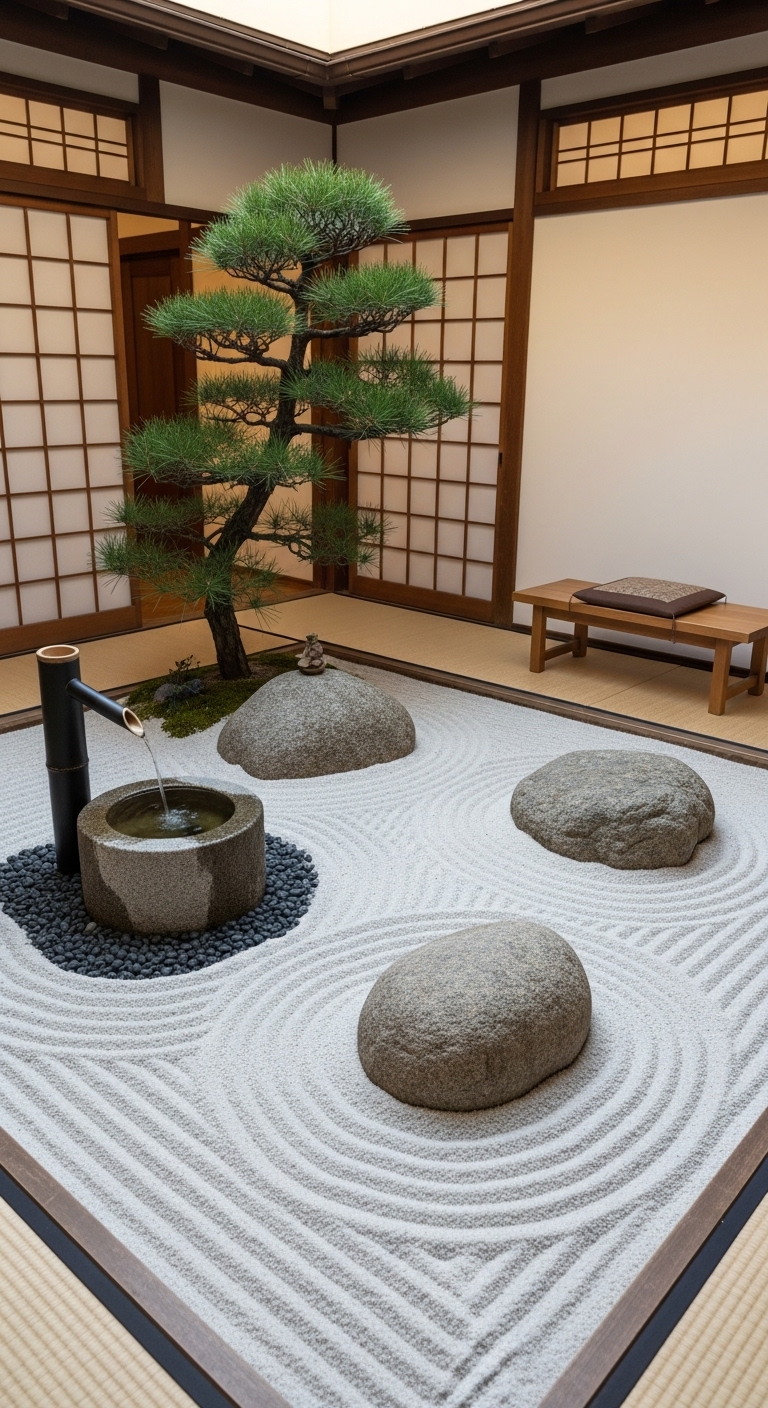
There’s something about Zen gardens that just works indoors, isn’t there? The emphasis on simplicity, natural materials, and mindful arrangement creates an immediate sense of calm. But here’s what most people get wrong: they think Zen means boring or minimal.
Actually, a well-designed indoor courtyard Zen garden is rich with sensory details – the sound of water trickling over stones, the texture of different mosses, the way light plays on raked sand or gravel. It’s about creating moments of focus and contemplation, not emptiness.
For a true indoor courtyard Zen garden, consider elements like a small water feature, carefully placed stones, and a mix of mosses and low-growing plants. The key is restraint – each element should have a purpose and space to breathe.
Japanese Indoor Courtyard Garden
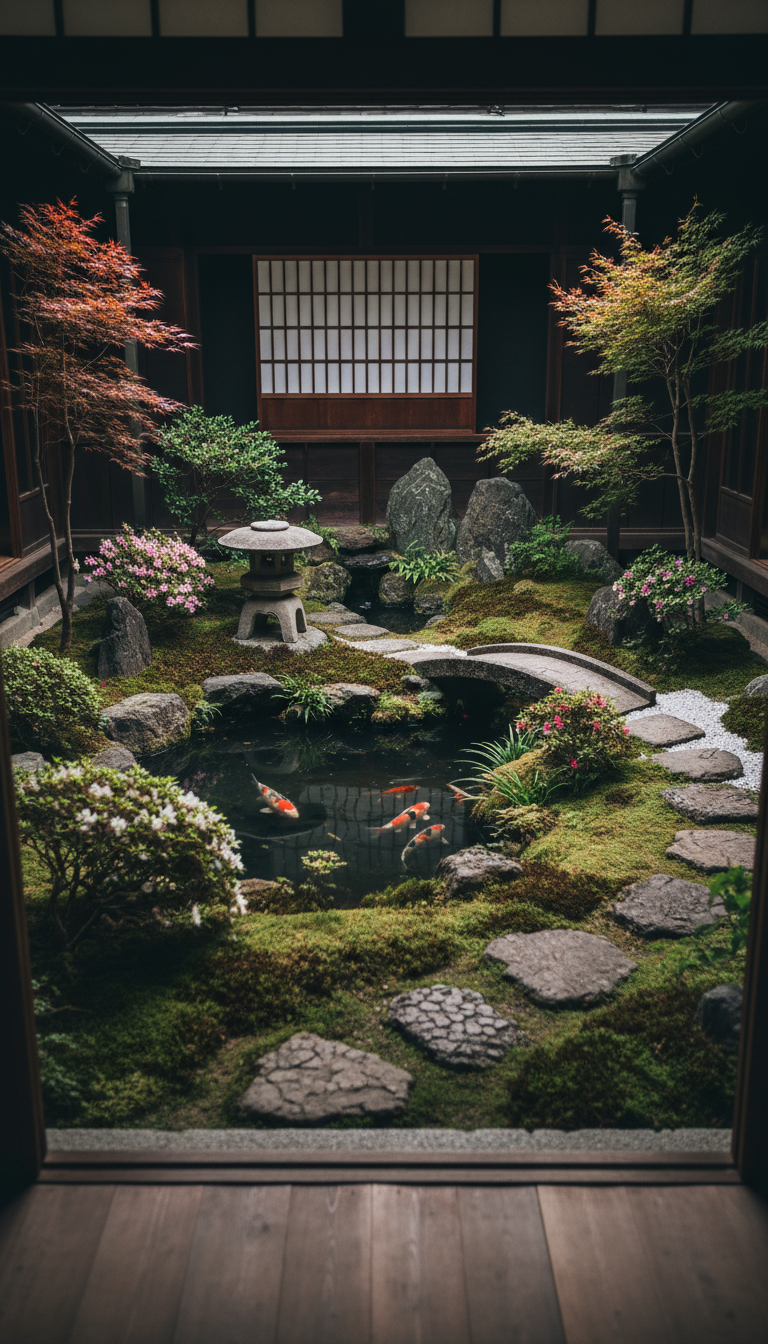
Japanese garden design takes the principles of Zen and expands them into a more complex aesthetic. The Japanese indoor courtyard garden is all about creating a miniature landscape that evokes natural scenes on a small scale.
Think about incorporating elements that represent larger natural features – a standing stone might become a mountain, a small pond an ocean, a patch of moss a forest floor. The Japanese approach also emphasizes seasonal change, so consider plants that will provide interest throughout the year.
One of my favorite techniques is the “borrowed scenery” concept – framing views of your courtyard from specific vantage points inside your home, making it feel like an integral part of your living space rather than a separate feature.
Indoor Courtyard Dry Garden
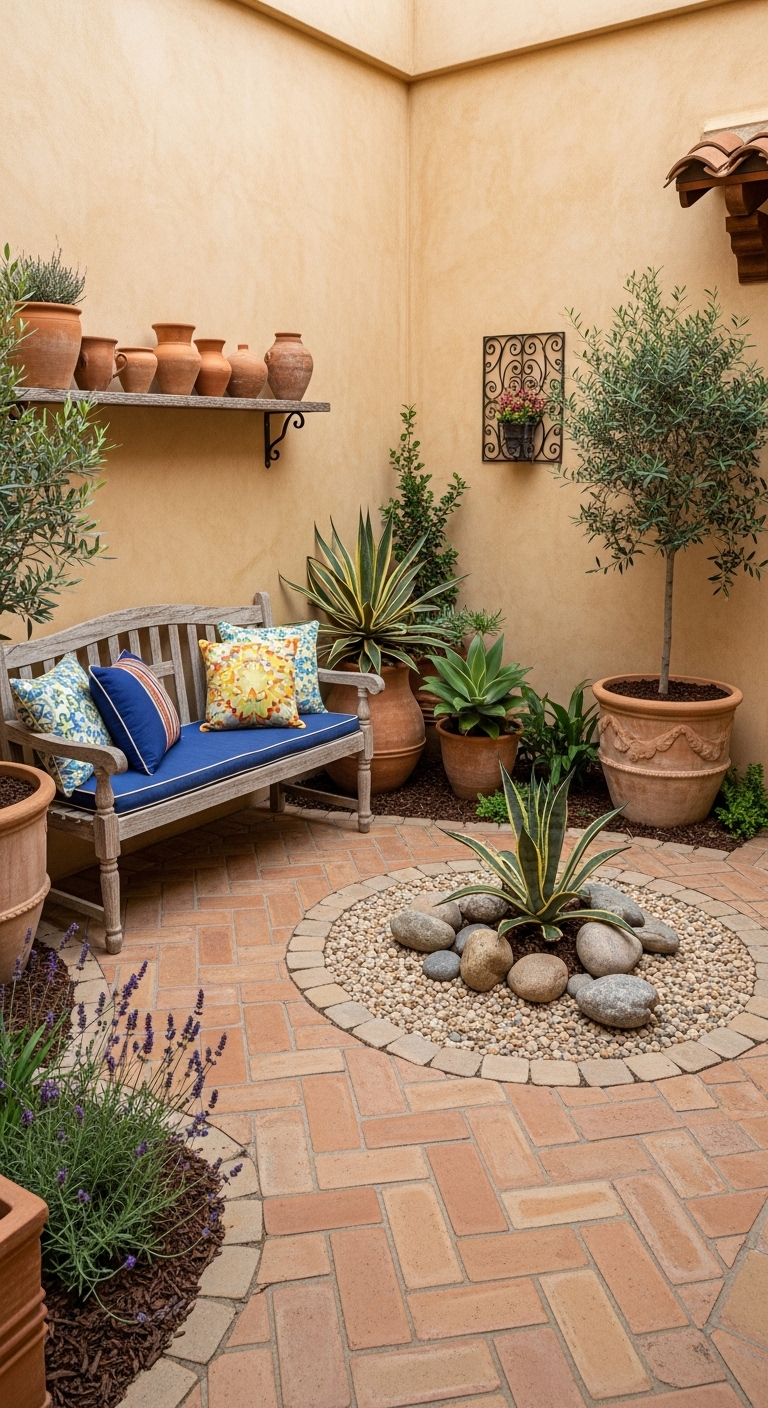
Not everyone wants to deal with the maintenance of a lush, water-intensive garden, and that’s where dry gardens come in. Inspired by Mediterranean and arid landscapes, indoor courtyard dry gardens can be just as beautiful as their water-loving counterparts.
Succulents are obvious choices, but don’t stop there. Consider ornamental grasses, drought-tolerant perennials, and even interesting branches or sculptural elements. The key is creating texture and interest through form rather than foliage alone.
Dry gardens work particularly well in bright, sunny spaces where other plants might struggle. They’re also perfect for the environmentally conscious homeowner who wants to minimize water usage while still enjoying the benefits of an indoor garden.
Vertical Garden Indoor Courtyard Solutions
When floor space is at a premium, going vertical is the answer. Vertical gardens have exploded in popularity in recent years, and for good reason – they offer all the benefits of traditional gardening with a fraction of the space requirement.
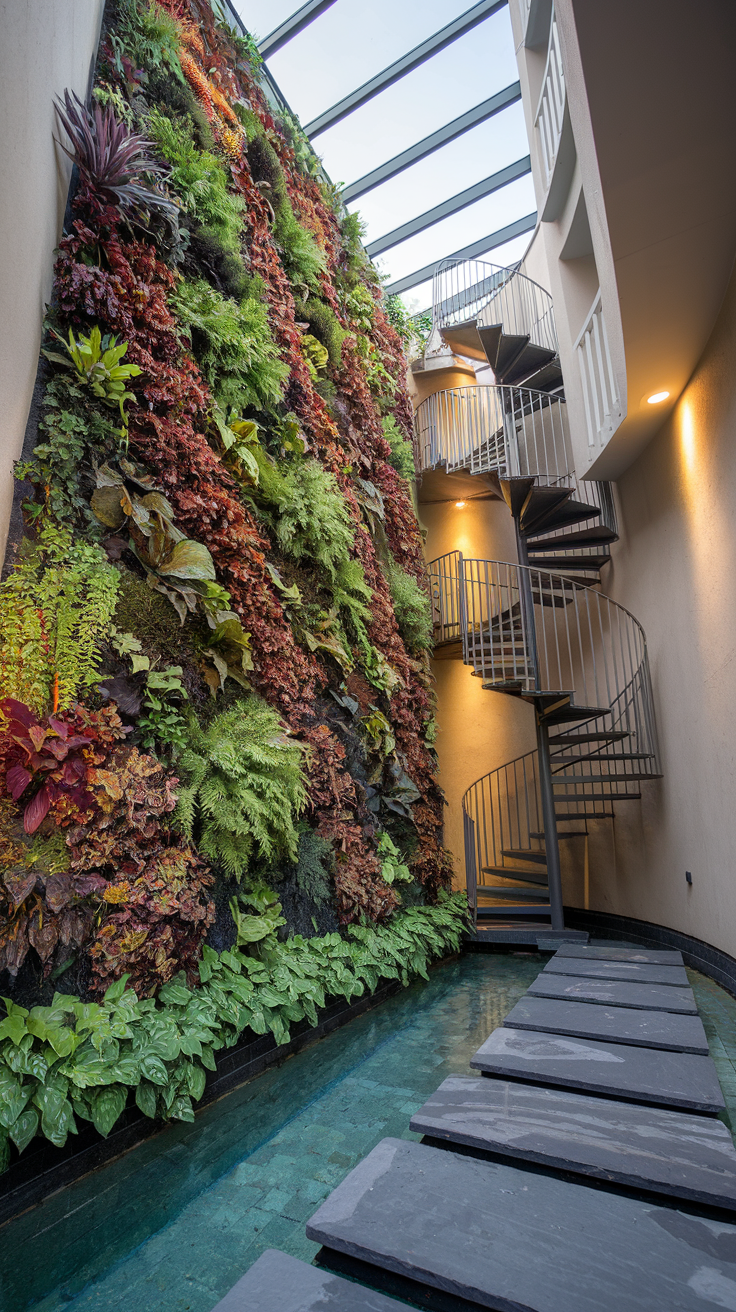
Maximizing Space with Vertical Elements
The beauty of a vertical garden in an indoor courtyard is how it transforms walls from barriers to opportunities. Living walls create a stunning backdrop, but don’t limit yourself to the obvious solutions.
Consider hanging planters at different heights, creating a tiered effect that draws the eye upward. Wall-mounted pockets can house a variety of plants, creating a tapestry of colors and textures. Even simple trellises with climbing plants can add vertical interest while purifying the air.
I once worked with a client who had a narrow, dark stairwell that felt like wasted space. We installed a series of wall-mounted planters with shade-loving plants and a small vertical water feature. That stairwell became one of the most talked-about features of their home – a living art installation that connected the two floors of their house.
Plant Selection for Vertical Gardens

Here’s where people often go wrong with vertical gardens – they choose plants based solely on appearance without considering their growing habits. For a successful vertical garden, you need plants that naturally have a trailing or climbing habit, or those that stay compact in their growth.
Some of my go-to choices include pothos, philodendrons, and ferns for lower light conditions. For brighter spaces, consider string of pearls, succulents, or even herbs if you want something functional as well as beautiful.
Remember that vertical gardens can be challenging to water, so either choose drought-tolerant plants or invest in a drip irrigation system. And don’t forget about accessibility – make sure you can reach all parts of your vertical garden for maintenance.
Indoor Courtyard Gardens Design Fundamentals
Regardless of the style you choose, there are some fundamental principles that apply to all indoor courtyard gardens. Understanding these will help you create a space that not only looks good but functions well and stands the test of time.
Planning Your Layout
Before you buy a single plant, take the time to really understand your space. How does light move through it throughout the day? Where are the natural pathways? How will you view the courtyard from different parts of your home?
I always recommend creating a simple sketch of your space, marking out the areas that receive direct light, indirect light, and shade. This will be your guide when selecting plants – there’s nothing more frustrating than watching beautiful plants struggle because they’re in the wrong environment.
Also think about how you’ll move through and interact with your courtyard. Leave adequate pathways for maintenance, and consider how you might want to use the space – will you be sitting in it, or just viewing it from afar?
Lighting Considerations
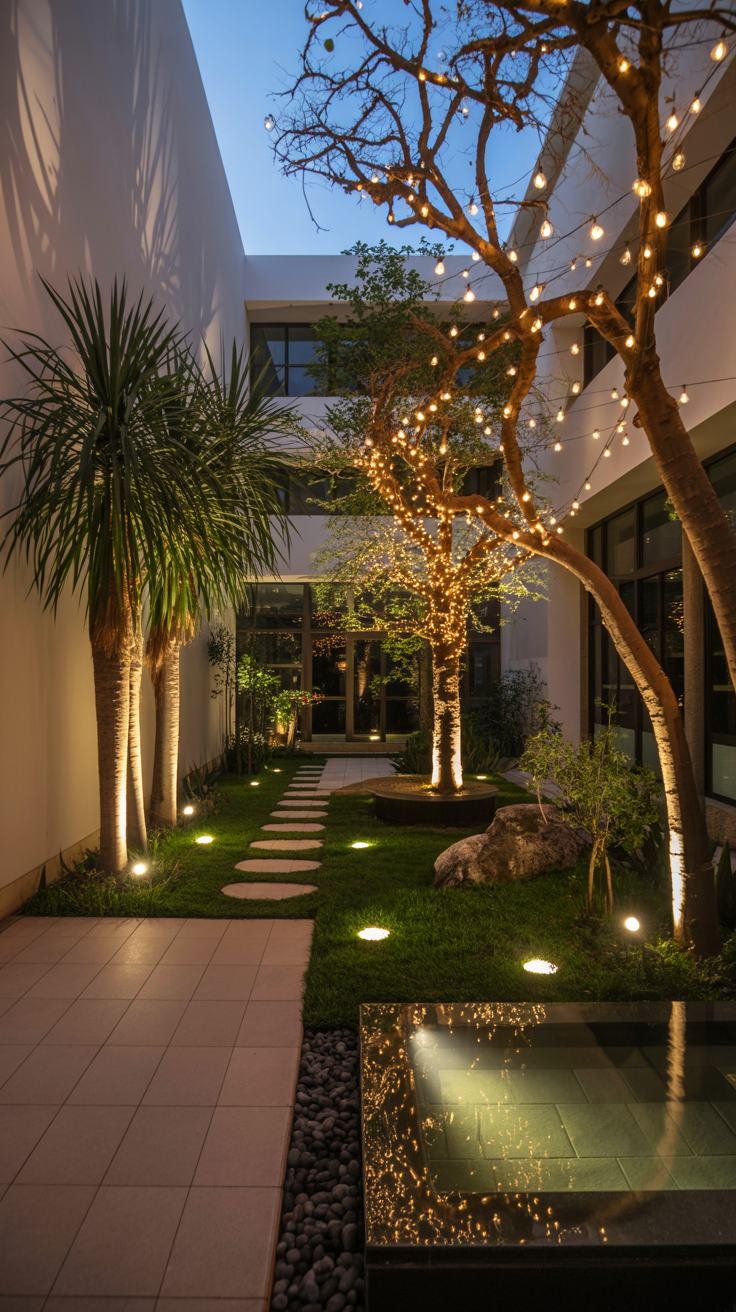
Most indoor spaces don’t provide enough natural light for a truly thriving garden, so supplemental lighting is often necessary. But here’s the thing – grow lights have come a long way from the clunky, industrial-looking fixtures of the past.
Today’s options include sleek, integrated lighting systems that can be adjusted to provide the specific spectrum of light your plants need. Some even simulate natural daylight cycles, which can make a huge difference in plant health.
Don’t forget about aesthetic lighting either. Well-placed uplighting can create dramatic shadows and highlight the texture of plants. String lights or lanterns can add a magical quality for evening enjoyment. The right lighting can transform your courtyard from a daytime feature to a 24-hour sanctuary.
Water Features and Sound Elements
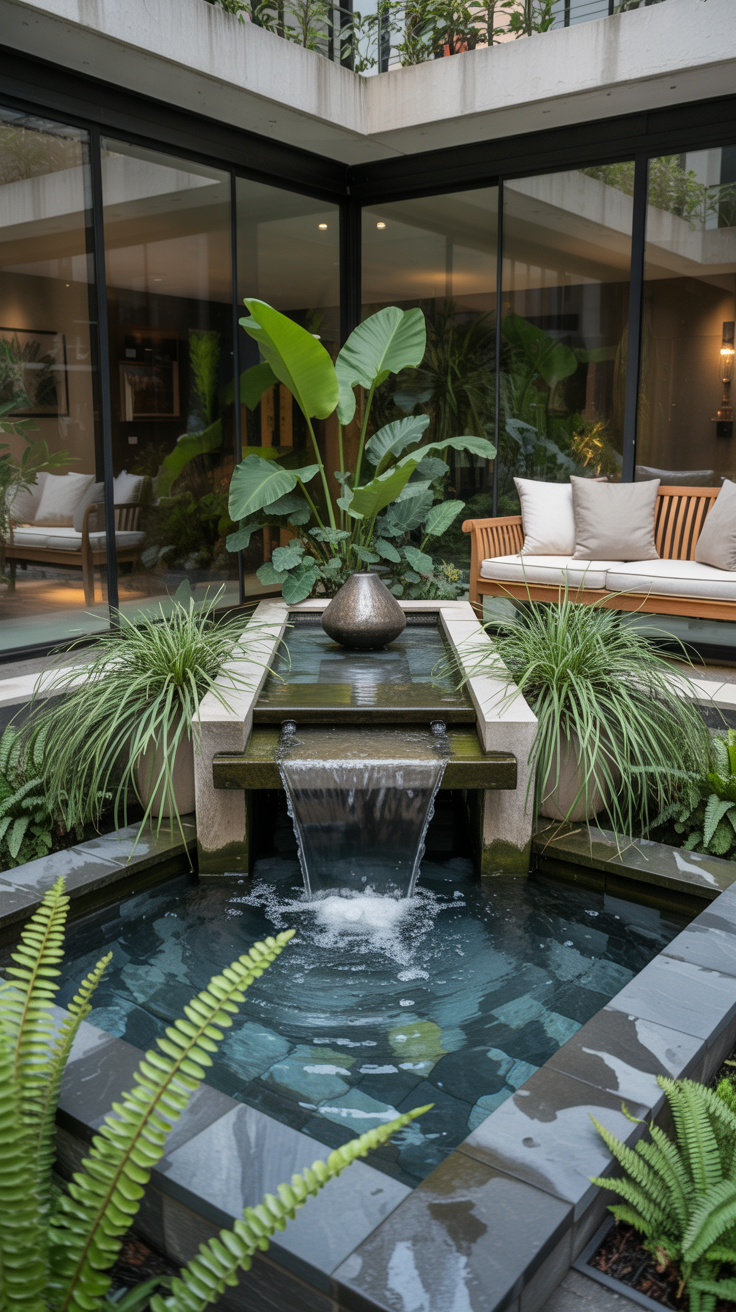
You know that feeling you get when you hear water trickling? There’s a reason spas and meditation spaces incorporate water features – the sound is inherently calming. In an indoor courtyard, a water feature serves multiple purposes: it adds humidity, masks unwanted noise, and creates a focal point.
The scale of your water feature should match your space – a small tabletop fountain for a tiny courtyard, perhaps a larger floor-standing element for a more expansive area. Even a simple DIY option like a shallow bowl with a small pump can create that soothing sound.
Don’t limit yourself to water either. Wind chimes, bamboo fountains, or even carefully selected gravel paths can add auditory interest to your courtyard. These sound elements create another layer of sensory experience that makes your garden truly immersive.
Bringing It All Together

Creating an indoor courtyard garden is a journey, not a destination. The most successful ones evolve over time, responding to the changing needs of both the plants and the people who enjoy them.
Maintenance Tips for Longevity
Let’s be honest – all gardens require some level of care, and indoor courtyards are no exception. But with the right approach, maintenance can become a pleasure rather than a chore.
Set up a regular care schedule based on your plants’ needs. Some will require weekly attention, others might be fine with monthly check-ins. Invest in quality tools that make maintenance easier – long-handled watering cans, good pruning shears, perhaps even a small indoor hose system if your space allows.
I always recommend keeping a garden journal, noting what works and what doesn’t. Plants that thrive in your specific conditions? Make a note. Those that struggle despite your best efforts? Perhaps they’re not suited to your environment. This kind of observation will help you refine your courtyard over time.
Seasonal Adaptations
One of the joys of an indoor courtyard is that it can provide year-round interest, but that doesn’t mean it should remain static. Consider how your courtyard might change with the seasons.
Perhaps you could add spring bulbs for early color, switch to tropical plants in summer, incorporate ornamental grasses for autumn texture, and focus on evergreens and structural elements in winter. These seasonal touches keep your courtyard feeling fresh and connected to the natural world outside.
Lighting also needs seasonal adjustment – as natural light patterns change throughout the year, you may need to supplement more in winter and less in summer. This kind of responsive care ensures your courtyard remains healthy and beautiful year-round.
Your Indoor Courtyard Project Begins Now
So there you have it – everything you need to start thinking about creating your own indoor courtyard garden. But here’s the thing: reading about it is one thing, experiencing it is another entirely.
I want you to take a moment right now to look around your home with fresh eyes. That awkward corner? The unused space beneath the stairs? The boring balcony? These aren’t problems – they’re opportunities waiting to be discovered.
Start small if you need to. A single beautiful plant in a special container can be the beginning of your indoor courtyard journey. Or go big if you’re ready – transform that entire room you never use into the garden sanctuary of your dreams.
Whatever approach you take, remember that an indoor courtyard garden is more than just a design feature. It’s a living, breathing part of your home that will grow and change with you. It’s a connection to nature when you can’t get outside. It’s a sanctuary in a chaotic world.
So what are you waiting for? Your secret garden is waiting to be discovered. And trust me, once you experience the magic of stepping into your own indoor courtyard, you’ll wonder how you ever lived without it.
